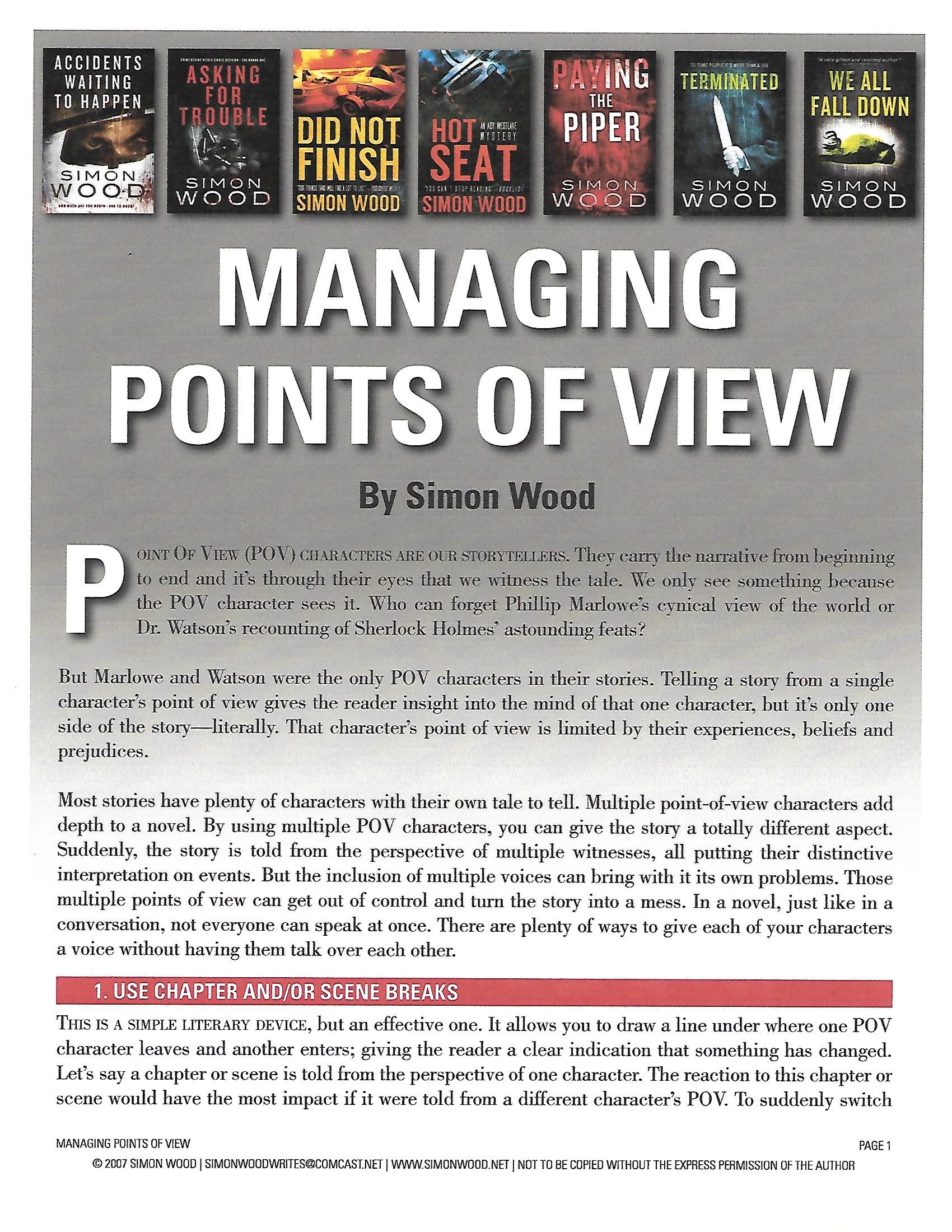 My online workshop on Point-of-View writing starts on April 3rd. If you want to learn how to keep your POV straight in your books, here’s what to expect from the workshop and you can sign up here:
My online workshop on Point-of-View writing starts on April 3rd. If you want to learn how to keep your POV straight in your books, here’s what to expect from the workshop and you can sign up here:
Can’t decide who’s the best character to tell your story? You don’t have to settle for just a single character’s point of view. I’ll discuss the techniques and the decisions that have to be made when writing in multiple points of view.
Weaving multiple viewpoint characters in and out of a story is like standing trial and knowing what the judge, the prosecuting attorney and all 12 members of the jury are thinking. Each person is witnessing the same information, but each individual interpretation is different. But it’s not like you can crack into everyone’s mind simultaneously. Even if you could, it’d be impossible to comprehend what 14 people are saying if they’re all talking at the same time.
Allowing multiple characters to tell your story can add depth and insight that a single point of view may not be able to convey. Most stories have plenty of characters with their own tales to tell. Multiple POV characters add depth to a novel. Suddenly the story is being told from the perspective of multiple witnesses, all putting their distinctive interpretations on events. But the inclusion of multiple voices can bring with it its own problems. Those multiple points of view can get out of control and turn the story into a mess. In a novel, just like in a conversation, not everyone can speak at once. There are plenty of ways to give each character a voice without having them talk over one another. Even if you’re only writing from a single point-of-view or utilizing an omniscient POV approach, going through these exercises will help ensure there’s a smooth transition between characters.
Lesson Plan:
- Lesson #1: Creating a hierarchy of POV characters
- Lesson #2: Limit the number of POV characters
- Lesson #3: Pick the right character for the right job
- Lesson #4: POV Toolbox Tricks #1— Use chapter and/or scene breaks & Changing Spaces
- Lesson #5: POV Toolbox Tricks #2—Passing the baton, Mixing perspectives & Using distinctive voices
- Lesson #6: POV Plan Review

